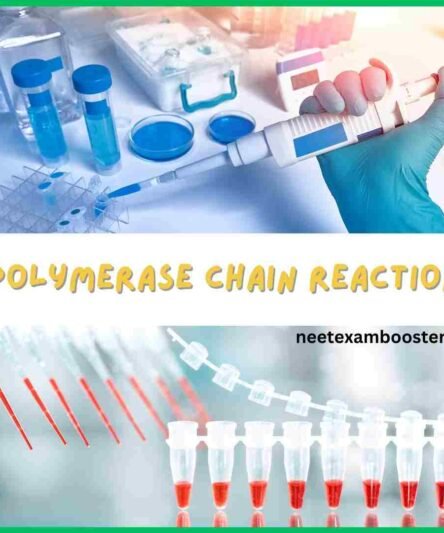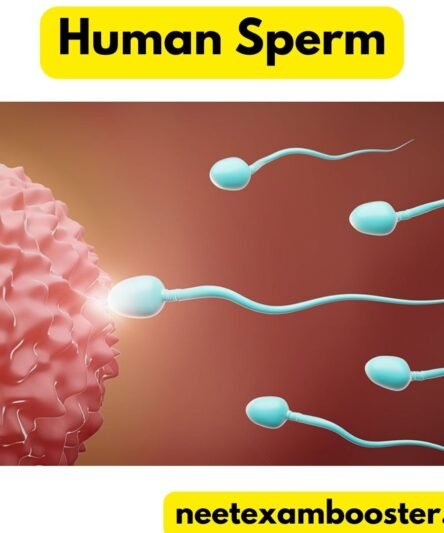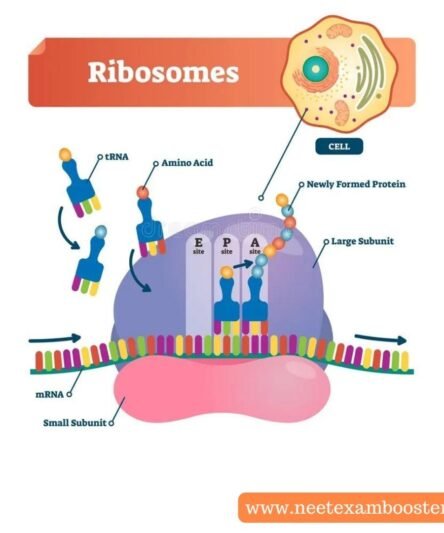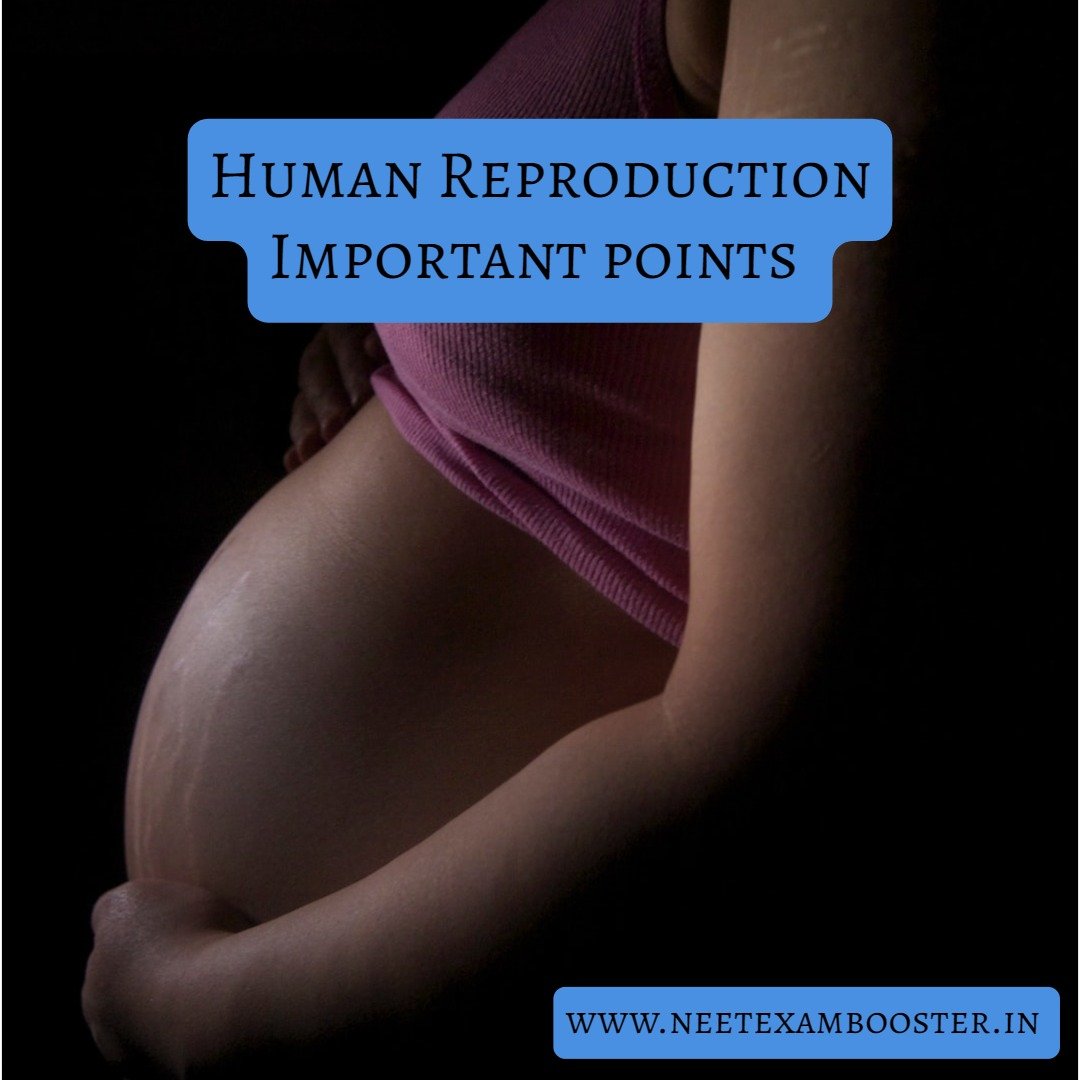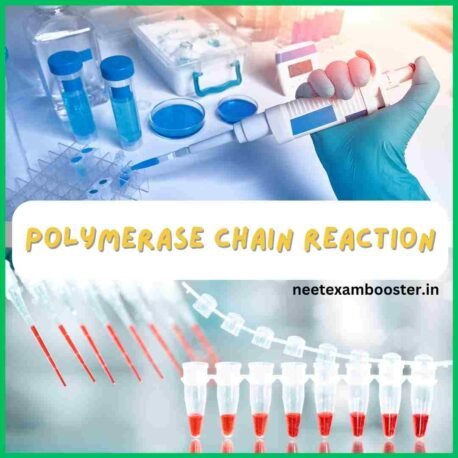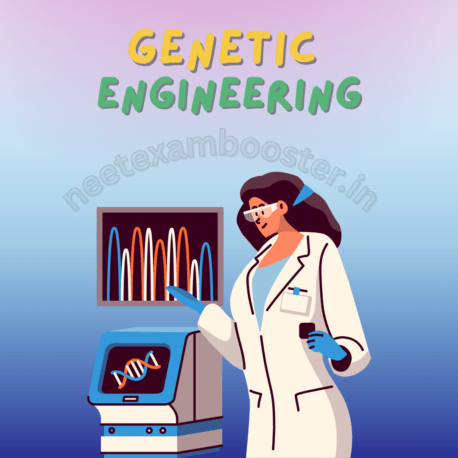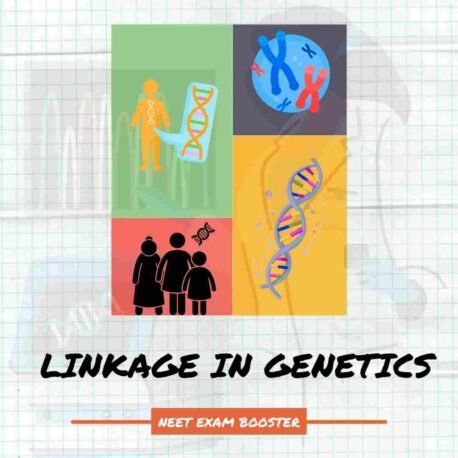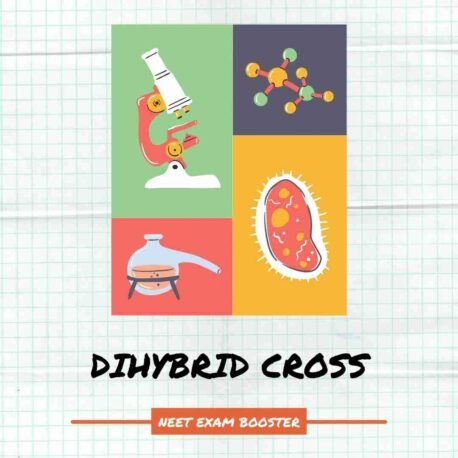Human Reproduction Important Points For NEET: Human reproduction is a process by which the new human beings are produced. It involves fusion of a sperm cell and an egg cell, resulting in the formation of a zygote, which develops into an embryo and then eventually a fetus.
The male reproductive system includes testes, epididymis, vas deferens, seminal vesicles, prostate gland, and the urethra. The testes produce sperms, which are stored in epididymis until ejaculation. During the process of ejaculation, sperms are transported through vas deferens and mixed with the fluid from seminal vesicles and prostate gland to form the semen, which is expelled through urethra.
The female reproductive system includes ovaries, fallopian tubes, uterus, cervix, and vagina. Each month, ovary releases an egg, which travels through fallopian tube towards the uterus. If the egg is fertilized by a sperm during this journey, it gets implants in the uterus and begins to develop into an embryo.
Human reproduction is regulated by the hormones, including the follicle-stimulating hormone (FSH), luteinizing hormone (LH), estrogen, progesterone, and the testosterone. Various factors, such as age, health, and lifestyle, can affect the fertility and ability to conceive and carry a pregnancy to term.
Human reproduction important points, Human reproduction important points, Human reproduction important points, Human reproduction important points, Human reproduction important points, Human reproduction important points
NCERT biology class 12 chapter 3 – 25 important points on human reproduction
There are 25 important points on human reproduction important points:

1. Human reproduction is a process by which a new individual is produced from combination of the genetic material from two individuals, usually one male and one female.
2. Reproduction is essential for continuation of the species and is one of the fundamental aspects of the human biology.
3. The male reproductive system includes testes, epididymis, vas deferens, seminal vesicles, prostate gland, and the urethra.
4. The female reproductive system includes ovaries, fallopian tubes, uterus, cervix, and the vagina.
5. The process of human reproduction begins with production of the gametes, which are specialized cells that carry the genetic information. In males, these gametes are known as sperm, and in females, they are known as eggs.
6. The production of the sperm occurs through process of spermatogenesis, which takes place in testes.
7. The production of eggs occurs through the process of oogenesis, which takes place in ovaries.
8. Fertilization occurs when a sperm cell penetrates an egg cell, and the genetic material from both cells combines to form a zygote.
9. The zygote undergoes a series of cell divisions to form an embryo, which eventually gets implants in uterus.
10. Pregnancy period lasts for about 40 weeks, during this time, embryo develops into a fetus.
11. The placenta is an organ that develops during pregnancy and provides the nutrients and oxygen to developing fetus.
12. The umbilical cord connects the fetus to placenta and allows for the exchange of the nutrients, oxygen, and waste products.
13. Labor is a process by which the fetus is delivered from uterus.
14. The three stages of the labor are early, active, and transitional stages.
15. The final stage of labor is delivery of the placenta.
16. Hormones plays a critical role in human reproduction. In case of females, estrogen and progesterone regulates the menstrual cycle and are essential for the pregnancy. In case of males, testosterone is primary sex hormone.
17. Sexual intercourse is the primary means of the reproduction in humans. During the intercourse, male ejaculates thr semen, which contains the sperm, into female reproductive tract.
18. Contraception is deliberate use of methods to prevent the pregnancy. These methods includes hormonal contraceptives, barrier methods, and sterilization.
19. Sexually transmitted infections (STIs) can be transmitted during the sexual intercourse and can have serious health consequences. Some of the common STIs include chlamydia, gonorrhea, herpes, HIV, and syphilis.
20. Infertility is the inability to conceive a child after a year of regular, and unprotected intercourse. It can be caused by a variety of factors, including the hormonal imbalances, structural issues, and the genetic conditions.
21. Assisted reproductive technologies (ART) are the medical interventions that can help people with the fertility issues conceive a child. Some of the common ART procedures includes in vitro fertilization (IVF) and intrauterine insemination (IUI).
22. The ethical and the legal issues surrounding the human reproduction are complex and often controversial. These issues can include the debates over access to contraception, abortion, and assisted reproductive technologies, as well as questions about rights of the unborn child.
23. Pregnancy and childbirth can have a significant physical and a emotional impacts on women. Postpartum depression, for example, affects around 1 in 7 women.
24. Paternity testing can help to determine biological father of a child. This can be done through the DNA testing of the child, the mother, and the alleged father.
25. Human reproduction is a complex and fascinating topic that is essential to our understanding of the human biology and our place in natural world.
Some Important Questions From Biology Class 11
| Chapter Name | Quiz Link |
| The Living World | Play Now |
| Biological Classification | Play Now |
| Plant Kingdom | Play Now |
| Animal Kingdom | Play Now |
| Morphology of flowering plants | Play Now |
| Anatomy of flowering plants | Play Now |
| Cell: the unit of life | Play Now |
| Biomolecules | Play Now |
| Cell Cycle and cell division | Play Now |
| Transport in Plants | Play Now |
| Structural organisation in Animals | Play Now |
| Mineral nutrition | Play Now |
| Photosynthesis in higher plants | Play Now |
| Respiration in plants | Play Now |
| Plant Growth and development | Play Now |
| Digestion and Absorption | Play Now |
| Breathing and Exchange of Gases | Play Now |
| Body fluids and circulation | Play Now |
| Excretory products and their elimination | Play Now |
| Locomotion and Movement | Play Now |
| Neural Control and Coordination | Play Now |
| Chemical Coordination and Integration | Play Now |
Some Important Questions From Biology Class 12
| Chapter Name | Quiz Link |
| Reproduction in organism | Play Now |
| Sexual reproduction in flowering plant | Play Now |
| Human reproduction | Play Now |
| Reproductive health | Play Now |
| Principles of inheritance and variation | Play Now |
| Molecular basis of inheritance | Play Now |
| Evolution | Play Now |
| Human health and disease | Play Now |
| Strategies for enhancement in food product | Play Now |
| Microbes in human welfare | Play Now |
| Biotechnology principles and processes | Play Now |
| Biotechnology and its application | Play Now |
| Organism and population | Play Now |
| Ecosystem | Play Now |
| Biodiversity and its conservation | Play Now |
| Environment issue | Play Now |

